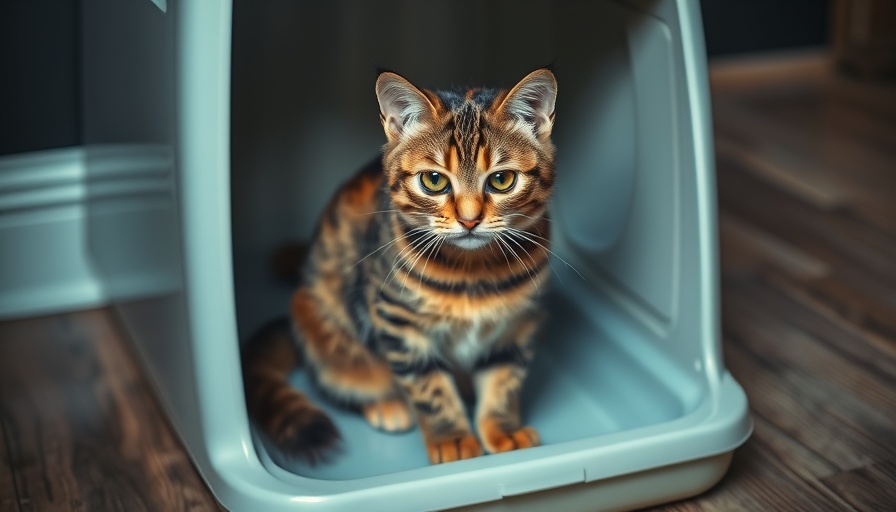
Why You Should Never Ignore a Cat That Can't Pee
As a cat owner, one of the most alarming things you can experience is noticing your feline friend struggling to urinate. Veterinarians refer to this condition as a "blocked cat," which is a potentially life-threatening situation. Understanding the implications of urinary blockage is crucial for any cat lover, as it can lead to severe complications like kidney failure and hazardous electrolyte imbalances if not treated promptly.
Recognizing the Signs
When a cat faces a urinary blockage, it may exhibit certain distress signals. This might include loud vocalizations, frequent trips to the litter box, and excessive licking of their genital area. Particularly concerning is when a male cat is unable to urinate, as their narrow urethras make them more susceptible to blockages. However, females can also face this dire situation. Vigilance is key in acting swiftly to ensure your pet receives immediate medical attention.
Common Causes of Urinary Blockage
Understanding the reasons behind why your cat can’t pee can help you be more proactive in your response:
- Mucus Plugs: This is a prevalent cause of urethral obstructions in male cats. Mucus, urinary crystals, and inflammatory cells can accumulate to form plugs that block urine flow.
- Urethral Stones: Small stones made from minerals and crystals can travel into the urethra, obstructing urine passage.
- Feline Lower Urinary Tract Disease (FLUTD): This encompasses various conditions affecting the bladder and urethra, which can lead to obstructions.
Understanding the Veterinary Perspective
Veterinarians emphasize the urgency of addressing urinary blockages. If you suspect your cat is experiencing a blockage, it’s critical to call your vet immediately. Delaying intervention can lead to dire consequences, such as permanent damage to the bladder and kidneys.
Social Connections: Support for Pet Owners
Aside from the immediate concerns of health and safety, facing a situation where your cat can’t urinate can be emotionally taxing. Connecting with fellow pet owners going through similar situations can provide comfort. Online forums and local pet owner groups often share insights and experiences, emphasizing the importance of community support during emergencies.
Your Cat’s Health is in Your Hands
Being informed about the health challenges faced by your pets not only improves their well-being but enhances the bond you share. Knowing what signs to look for enables you to react promptly and provide your cat the best care possible.
Prevention is Key
Maintaining a regular vet check-up schedule and being observant of your cat’s behavior can help catch potential urinary issues before they become serious emergencies. Consider discussing dietary choices with your veterinarian; certain foods may decrease the likelihood of the formation of urinary crystals.
Act When in Doubt
Lastly, the best advice is always to trust your instincts. If you notice any unusual behavior in your cat, it’s better to err on the side of caution and consult your veterinarian. Quick action can save your cat’s life.
Conclusion: Be Prepared for Emergencies
Understanding the implications of a cat that can’t pee can empower you as a pet owner. Always be ready to react swiftly to your cat’s needs. Stay informed and connected with fellow pet parents, ensuring you navigate the challenging waters of pet health with confidence.
Take action if you notice your cat displaying any signs of discomfort or inability to urinate; remember that timely intervention can be the difference between life and death. Your love and vigilance are key!
 Add Row
Add Row  Add
Add 


Write A Comment